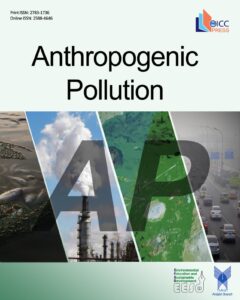Characterization of Aquatic Beetles Shells (Hydraenidae family) derived chitosan and its application in order to eliminate the environmental pollutant bacterial
Authors
-
*
 1
1
-
 2
2
- Asadi 3
- Gholam Zadeh 4
- Kharat Sadeghi 5
Abstract
Chitosan is one of the natural biopolymer. Despite its importance, the characterization and extraction processes of this essential biopolymer are yet enigmatic. In this study, we developed an analytical procedure for the extraction of chitin and chitosan from the aquatic beetles’ shells (Hydraenidae family). The commercial chitosan and isolated chitosan, obtained during our experiment were analyzed by XRD, EDX, SEM, FT-IR, TGA, and UV-vis DRS techniques. Our results indicate 38% chitin and 23.5% chitosan segregated from the aquatic beetles’ shells. The ratio of protein residues to the wet weight (RWW) of the segregated chitosan was about 24%. FT-IR analysis attested that the isolated chitosan from the aquatic beetles’ shells was identical to the commercial chitosan. The EDX analysis does not reveal any impurities or the used precursor’s characterized peaks, confirming high purity percentage of the segregated chitosan. Furthermore, according to the SEM images the segregated chitosan has smooth surface with amorphous property. Ultimately, the antibacterial activities of isolated chitosan were investigated against Escherichia coli (Gram-negative) and Staphylococcus aureus (Gram-positive) bacteria to assess their potential antibacterial applications. The results showed that the isolated chitosan from the aquatic beetles represented an outstanding performance in against the studied bacteria.


